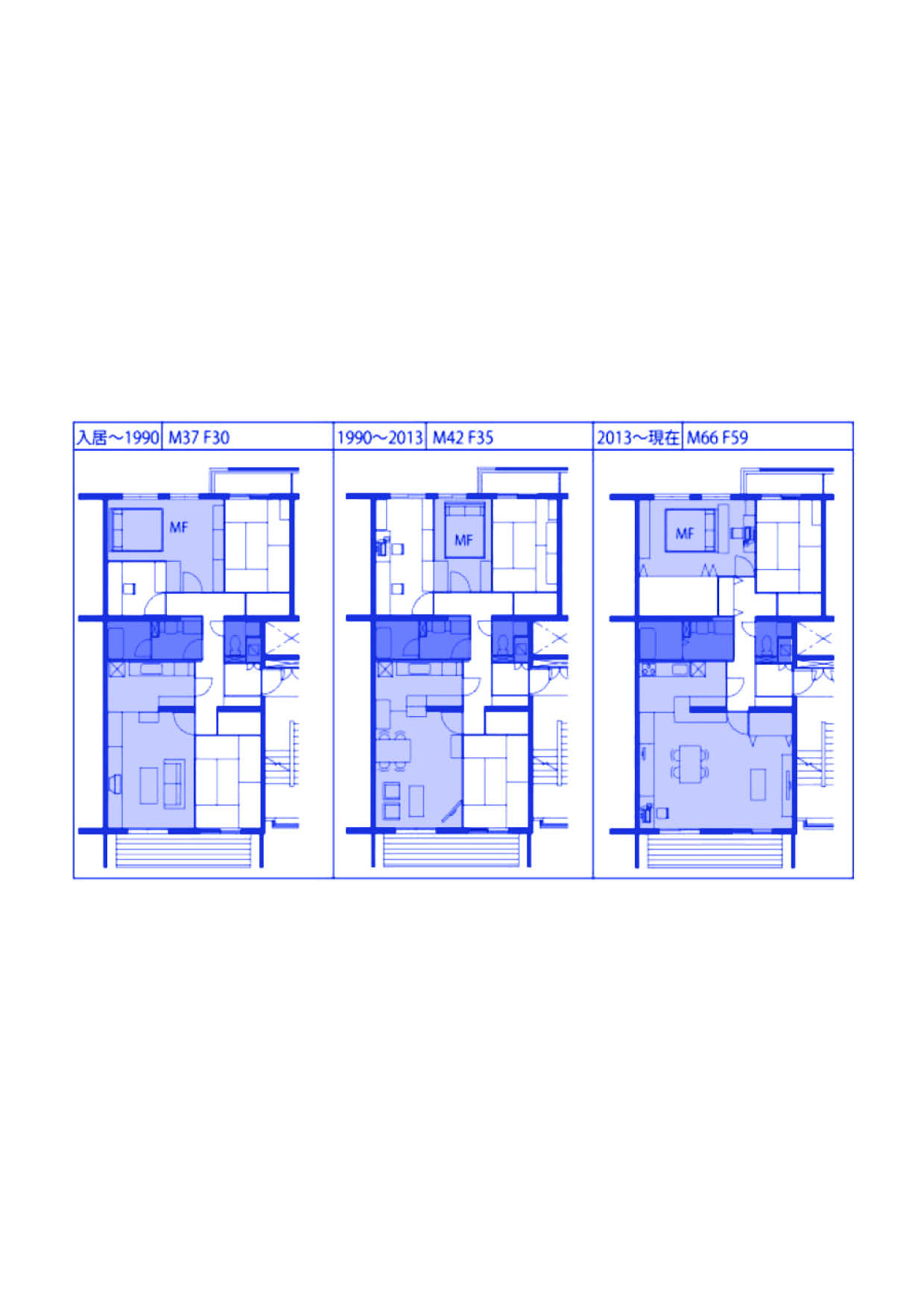
Kodan Expermiental Housing Project
Public opinion, Housing, Consumption, Waste, Recycle, Metropolitan, Housing, Lifestyle, Drawing
In the late 70s the Japanese government in collaboration with the private sector started a research on how to design housing that can last longer while being able to adapt to the changes that come with time. Kodan Experimental Housing Project (KEP) was one of those researches. The results of such a project are more relevant than ever considering Japan’s anticipated shortage of construction workers in the near future. An infill system that can be set up by unskilled labor as well as the possibility to remain relevant while time passes by are key to the future of housing in Japan.
Flexibility in family apartments were firstly experimented as part of a certain housing estate of Tama New Town. KEP installed movable partitions that were able to create variations of living setups. The option of remodelling the household prolonged the lifetime of multi-family dwelling units. “The Act for Promotion of Long-Life Quality Housing” that was implemented in 2009 had the same objective: building high quality houses that can be relevant for a longer time. That way there will be a reduction in consumption of natural resources, environmental and waste problems in the future.
1. Kazunobu Minami, The efforts to develop longer life housing with adaptability in Japan, https://www.sciencedirect.com/science/article/ (accessed March 17, 2020)
Public opinion, Housing, Consumption, Waste, Recycle, Metropolitan, Housing, Lifestyle, Drawing
In the late 70s the Japanese government in collaboration with the private sector started a research on how to design housing that can last longer while being able to adapt to the changes that come with time. Kodan Experimental Housing Project (KEP) was one of those researches. The results of such a project are more relevant than ever considering Japan’s anticipated shortage of construction workers in the near future. An infill system that can be set up by unskilled labor as well as the possibility to remain relevant while time passes by are key to the future of housing in Japan.
Flexibility in family apartments were firstly experimented as part of a certain housing estate of Tama New Town. KEP installed movable partitions that were able to create variations of living setups. The option of remodelling the household prolonged the lifetime of multi-family dwelling units. “The Act for Promotion of Long-Life Quality Housing” that was implemented in 2009 had the same objective: building high quality houses that can be relevant for a longer time. That way there will be a reduction in consumption of natural resources, environmental and waste problems in the future.
1. Kazunobu Minami, The efforts to develop longer life housing with adaptability in Japan, https://www.sciencedirect.com/science/article/ (accessed March 17, 2020)


